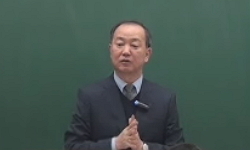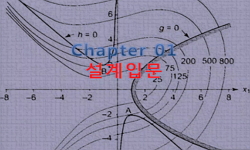This study took note how the document issue of martial law review by the Defense Security Command (after this, the DSC) that emerged in 2018 in the modern history of Korea, which has painful memories of martial law, reveals frames to inmates in differ...
http://chineseinput.net/에서 pinyin(병음)방식으로 중국어를 변환할 수 있습니다.
변환된 중국어를 복사하여 사용하시면 됩니다.
- 中文 을 입력하시려면 zhongwen을 입력하시고 space를누르시면됩니다.
- 北京 을 입력하시려면 beijing을 입력하시고 space를 누르시면 됩니다.
https://www.riss.kr/link?id=T15077782
- 저자
-
발행사항
서울 : 경희대학교 언론정보대학원, 2019
-
학위논문사항
학위논문(석사) -- 경희대학교 언론정보대학원 , 전략커뮤니케이션 , 2019. 2
-
발행연도
2019
-
작성언어
한국어
- 주제어
-
DDC
072.1 판사항(22)
-
발행국(도시)
서울
-
기타서명
An Analysis of Frame on the Security Issue : Focusing on the Martial Law Review Document by the Defense Security Command
-
형태사항
vi, 77 p. : 삽화 ; 26 cm
-
일반주기명
경희대학교 논문은 저작권에 의해 보호받습니다.
지도교수: 김은정
참고문헌: p. 61-68 -
UCI식별코드
I804:11006-200000176580
- 소장기관
-
0
상세조회 -
0
다운로드
부가정보
다국어 초록 (Multilingual Abstract)
Analysis period is from July 5, 2018 when the martial law review by the DSC was first released through the press since the end of September 1 when the DSC was disassembled and the Defense Security Support Command was established, it was the last article on this matter until September 12, the situation was divided into two sections, with the criterion set on August 3 when the Blue House ordered the dissolution of the DSC. The analysis target selected Chosun Ilbo, JoongAng Ilbo, and Dong-A Ilbo as conservative newspapers by referring to preceding research, The Hangyeorye newspaper and Kyunghyang newspaper were selected as progressive newspapers. Only editorial and column were selected for the articles, as a result, a total of 63 articles from five newspapers extracted 961 sentences related to the issue and began to analyze them. Using content analysis as a method of analysis, I used six analysis items were utilized: information source, tone of an argument, statement style, small frame, technical frame, and symbol expression, I was attempted to change the existing method of frame analysis study by trying to analyze by combining items that were not attempted in the existing method of study.
According to the analysis, the conservative and progressive media showed biased use of certain sources, making them more favorable to them. The tone of an argument was the biggest frame difference item, there's something in common that they use the most judgmental argument tone, in particular, they showed a wide gap in a target of criticism and use when they had critical tones, while shifting the blame for the issue to each other. Both conservative and progressive media focused on analytical methods because of their characteristic of editorials and columns, Combining analytical statements with small frames increases the proportion of emotional appeal by conservative media. In the small frame, both conservative and progressive media were mainly used rational appeal for the basic role of newspapers. In the technical frame, the anecdotal frame has an even higher percentage of both the conservatism and the progress step, reflecting the circumstances in which the event has yet to be investigated accurately. Especially, in the topic frame, the conservative and progressive media were able to identify differences in their framing strategy using the name. Finally, in symbolic expression, the progressive press had a relative proportion of superiority in directive expression and the conservative had a relative proportion of superiority in implicative expression.
In conclusion, the differences in frames in this issue are apparent in some of the items or in bonds of items, overall, the biggest difference is that the conservative media uses a more consumer-centered frame through emotion, for in-depth analysis, I identified that more diversification of item combinations would allow to identify the differences in detailed frames.
This study took note how the document issue of martial law review by the Defense Security Command (after this, the DSC) that emerged in 2018 in the modern history of Korea, which has painful memories of martial law, reveals frames to inmates in different values of conservative and progressive newspapers.
Analysis period is from July 5, 2018 when the martial law review by the DSC was first released through the press since the end of September 1 when the DSC was disassembled and the Defense Security Support Command was established, it was the last article on this matter until September 12, the situation was divided into two sections, with the criterion set on August 3 when the Blue House ordered the dissolution of the DSC. The analysis target selected Chosun Ilbo, JoongAng Ilbo, and Dong-A Ilbo as conservative newspapers by referring to preceding research, The Hangyeorye newspaper and Kyunghyang newspaper were selected as progressive newspapers. Only editorial and column were selected for the articles, as a result, a total of 63 articles from five newspapers extracted 961 sentences related to the issue and began to analyze them. Using content analysis as a method of analysis, I used six analysis items were utilized: information source, tone of an argument, statement style, small frame, technical frame, and symbol expression, I was attempted to change the existing method of frame analysis study by trying to analyze by combining items that were not attempted in the existing method of study.
According to the analysis, the conservative and progressive media showed biased use of certain sources, making them more favorable to them. The tone of an argument was the biggest frame difference item, there's something in common that they use the most judgmental argument tone, in particular, they showed a wide gap in a target of criticism and use when they had critical tones, while shifting the blame for the issue to each other. Both conservative and progressive media focused on analytical methods because of their characteristic of editorials and columns, Combining analytical statements with small frames increases the proportion of emotional appeal by conservative media. In the small frame, both conservative and progressive media were mainly used rational appeal for the basic role of newspapers. In the technical frame, the anecdotal frame has an even higher percentage of both the conservatism and the progress step, reflecting the circumstances in which the event has yet to be investigated accurately. Especially, in the topic frame, the conservative and progressive media were able to identify differences in their framing strategy using the name. Finally, in symbolic expression, the progressive press had a relative proportion of superiority in directive expression and the conservative had a relative proportion of superiority in implicative expression.
In conclusion, the differences in frames in this issue are apparent in some of the items or in bonds of items, overall, the biggest difference is that the conservative media uses a more consumer-centered frame through emotion, for in-depth analysis, I identified that more diversification of item combinations would allow to identify the differences in detailed frames.
국문 초록 (Abstract)
분석기간은 기무사의 계엄령 검토가 처음 언론을 통해 공개된 2018년 7월 5일부터 기무사가 해체되고 군사안보지원사령부가 창설된 9월1일 이후 이와 관련한 마지막 기사라 할 수 있었던 9월 12일까지로 하였고, 국면은 둘로 나누었는데 그 기준은 청와대에서 기무사의 해편을 지시한 8월 3일로 하였다. 분석대상은 선행연구들을 참고하여 보수신문으로는 조선일보, 중앙일보, 동아일보를 선정하였고, 진보신문으로는 한겨레신문과 경향신문을 선정하였다. 기사의 종류는 사설과 칼럼만을 선정하였고, 그 결과 5개 신문사의 총 63건의 기사에서 이슈와 관련이 있는 961문장의 문장을 추출하여 분석에 들어갔다. 내용분석을 분석방법으로 하여 정보원, 논조, 진술방식, 소구 프레임, 기술 프레임, 상징표현의 총 6가지 분석유목을 활용하였는데, 기존의 연구방법에서 시도되지 않았던 유목간의 결합을 통한 분석을 시도하여 기존 프레임 분석 연구에 변화를 꾀하였다.
분석 결과 정보원에서는 보수와 진보언론은 특정 정보원에 대해 편향적인 활용을 보여, 자신들에게 유리하게 활용하는 모습을 보여주었다. 논조는 가장 프레임 차이가 크게 나타난 유목이었는데, 판단형 논조를 가장 많이 활용한다는 공통점은 있지만 특히 비판형 논조일 때 비판의 대상과 활용에서 큰 차이를 보여주면서 이슈에 대한 책임공방을 서로에게 전가하는 모습을 보여 주었다. 진술방식에서는 보수와 진보언론 모두 사설과 칼럼이라는 특성 때문에 분석적인 방식 위주를 보였는데, 분석적 진술방식과 소구 프레임을 결합하면 보수언론이 상대적으로 더 감성 소구의 비율을 높이고 있다. 소구 프레임에서는 신문의 기본 역할에 맞게 보수와 진보언론 모두 이성 소구가 주로 활용되었다. 기술 프레임에서는 아직 사건에 대해 정확한 조사가 이루어지지 않은 상황이 반영되어 일화적 프레임이 보수와 진보 모두에서 월등히 높은 비율을 갖는다. 특히 주제적 프레임에서는 보수와 진보 언론이 명칭을 활용한 프레이밍 전략의 차이를 확인할 수 있었다. 마지막으로 상징표현에서는 진보언론은 지시적 표현에서, 보수언론은 함축적 표현에서 상대적인 우위의 비율을 가졌다.
결론적으로 이번 이슈에서 프레임의 차이는 몇 몇 유목, 또는 유목간의 결합에서 뚜렷하게 나타나는 데 전체적으로 보수언론이 감성을 통한 수용자 중심의 프레임을 더 활용하는 것이 가장 큰 차이라고 볼 수 있으며, 심층적인 분석을 위해 유목간의 결합을 좀 더 다양화하면 세밀한 프레임의 차이를 찾아 볼 수 있을 것을 확인하였다.
본 연구는 계엄에 대한 아픈 기억을 안고 있는 한국의 현대사속에서 2018년에 큰 논란을 일으키며 등장한 국군기무사령부(이후 기무사)의 계엄검토 문건 이슈가 보수신문과 진보신문의 서로 ...
본 연구는 계엄에 대한 아픈 기억을 안고 있는 한국의 현대사속에서 2018년에 큰 논란을 일으키며 등장한 국군기무사령부(이후 기무사)의 계엄검토 문건 이슈가 보수신문과 진보신문의 서로 다른 가치관 속에서 어떠한 방식으로 수용자들에게 프레임을 드러내고 있는지에 대해 주목하였다.
분석기간은 기무사의 계엄령 검토가 처음 언론을 통해 공개된 2018년 7월 5일부터 기무사가 해체되고 군사안보지원사령부가 창설된 9월1일 이후 이와 관련한 마지막 기사라 할 수 있었던 9월 12일까지로 하였고, 국면은 둘로 나누었는데 그 기준은 청와대에서 기무사의 해편을 지시한 8월 3일로 하였다. 분석대상은 선행연구들을 참고하여 보수신문으로는 조선일보, 중앙일보, 동아일보를 선정하였고, 진보신문으로는 한겨레신문과 경향신문을 선정하였다. 기사의 종류는 사설과 칼럼만을 선정하였고, 그 결과 5개 신문사의 총 63건의 기사에서 이슈와 관련이 있는 961문장의 문장을 추출하여 분석에 들어갔다. 내용분석을 분석방법으로 하여 정보원, 논조, 진술방식, 소구 프레임, 기술 프레임, 상징표현의 총 6가지 분석유목을 활용하였는데, 기존의 연구방법에서 시도되지 않았던 유목간의 결합을 통한 분석을 시도하여 기존 프레임 분석 연구에 변화를 꾀하였다.
분석 결과 정보원에서는 보수와 진보언론은 특정 정보원에 대해 편향적인 활용을 보여, 자신들에게 유리하게 활용하는 모습을 보여주었다. 논조는 가장 프레임 차이가 크게 나타난 유목이었는데, 판단형 논조를 가장 많이 활용한다는 공통점은 있지만 특히 비판형 논조일 때 비판의 대상과 활용에서 큰 차이를 보여주면서 이슈에 대한 책임공방을 서로에게 전가하는 모습을 보여 주었다. 진술방식에서는 보수와 진보언론 모두 사설과 칼럼이라는 특성 때문에 분석적인 방식 위주를 보였는데, 분석적 진술방식과 소구 프레임을 결합하면 보수언론이 상대적으로 더 감성 소구의 비율을 높이고 있다. 소구 프레임에서는 신문의 기본 역할에 맞게 보수와 진보언론 모두 이성 소구가 주로 활용되었다. 기술 프레임에서는 아직 사건에 대해 정확한 조사가 이루어지지 않은 상황이 반영되어 일화적 프레임이 보수와 진보 모두에서 월등히 높은 비율을 갖는다. 특히 주제적 프레임에서는 보수와 진보 언론이 명칭을 활용한 프레이밍 전략의 차이를 확인할 수 있었다. 마지막으로 상징표현에서는 진보언론은 지시적 표현에서, 보수언론은 함축적 표현에서 상대적인 우위의 비율을 가졌다.
결론적으로 이번 이슈에서 프레임의 차이는 몇 몇 유목, 또는 유목간의 결합에서 뚜렷하게 나타나는 데 전체적으로 보수언론이 감성을 통한 수용자 중심의 프레임을 더 활용하는 것이 가장 큰 차이라고 볼 수 있으며, 심층적인 분석을 위해 유목간의 결합을 좀 더 다양화하면 세밀한 프레임의 차이를 찾아 볼 수 있을 것을 확인하였다.
목차 (Table of Contents)
- Ⅰ. 서 론 1
- 1. 문제제기 1
- 2. 연구목적 2
- 3. 논문의 구성 3
- Ⅰ. 서 론 1
- 1. 문제제기 1
- 2. 연구목적 2
- 3. 논문의 구성 3
- Ⅱ. 이론적 배경 및 문헌고찰 4
- 1. 프레임 이론 4
- 1) 프레임 4
- 2) 뉴스 프레임의 유형 9
- 2. 미디어 텍스트와 내용분석 11
- 1) 미디어 텍스트(text)로서의 사설·칼럼 11
- 2) 내용분석 12
- 3. 한국 언론의 정파성과 이슈보도 14
- 1) 한국 언론의 정파성 14
- 2) 안보 이슈에 대한 선행연구 17
- 3) 기무사 계엄령 검토문건 이슈 18
- Ⅲ. 연구문제 및 연구방법 20
- 1. 연구문제 20
- 2. 연구설계 21
- 3. 연구방법 22
- 1) 분석 대상 및 기간 22
- 2) 자료수집 22
- 3) 분석유목 24
- 4) 코더간 신뢰도 검증 28
- Ⅳ. 연구결과 29
- 1. 유목별 프레임 분석 29
- 1) 정보원 분석 29
- 2) 논조 분석 35
- 3) 진술방식 분석 43
- 4) 소구 프레임 분석 48
- 5) 기술 프레임 분석 50
- 6) 상징표현 분석 53
- Ⅴ. 결론 및 제언 57
- 1. 연구결과의 요약 및 논의 57
- 2. 연구의 한계 및 제언 59
- 참고문헌 61
- 부록1-코딩가이드 69
- 부록2-분석대상 신문사의 사설 및 칼럼 리스트 71
- Abstract 76












